 Scottish kilt and many folk accessories (caps, bags, shawls, etc.) in Scotland are made from special tartan fabric. Historically, tartan is handmade – it was woven on weaving looms. Today, it is mostly industrially produced. But in this article, we’ll talk about a place where you can order any amount of tartan, even the fabric for a single kilt or a “patch” of unique tartan design. The fabric here is only half-handmade because the looms are motorized, so the weavers don’t have to use foot pedals to weave. But still, a lot of work is made by hand and the weavers control the process thoroughly.
Scottish kilt and many folk accessories (caps, bags, shawls, etc.) in Scotland are made from special tartan fabric. Historically, tartan is handmade – it was woven on weaving looms. Today, it is mostly industrially produced. But in this article, we’ll talk about a place where you can order any amount of tartan, even the fabric for a single kilt or a “patch” of unique tartan design. The fabric here is only half-handmade because the looms are motorized, so the weavers don’t have to use foot pedals to weave. But still, a lot of work is made by hand and the weavers control the process thoroughly.
Welcome to Scotland, the home of tartan. Once, hundreds of small weavers sent fabrics from here all over the world. But today, just a handful of superb mills survive, mostly producing the popular tartans in volume. But what if you want just a short piece of your own rare family tartan, maybe for a single kilt? Or perhaps you want a small piece of fabric in your own new tartan design. We're going to show you somewhere very special indeed: Scotland's last artisan tartan weaver of its kind.
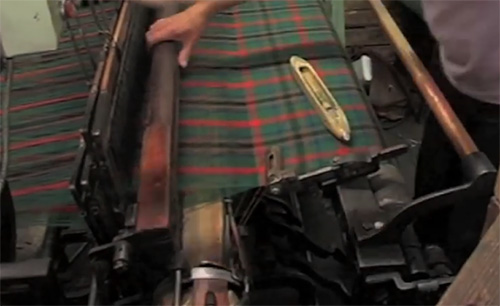
At D.C. Dalgliesh, we still weave tartan in the traditional way, even small pieces, keeping alive this historic craft. So, if you order, say, a kilt in a rare tartan, this is how your fabric is actually made.
Most tartans use from 2 up to 6 colors, so, first, our weaver selects yarns for you from the stocks of thread, in shades to create a harmonious and traditional tartan. For some weaves, we might even dye yarn specially. We need one cone of yarn for each thread in your tartan’s pattern, so we might need dozens of cones in a single color alone, each of which is wound on this special machine.
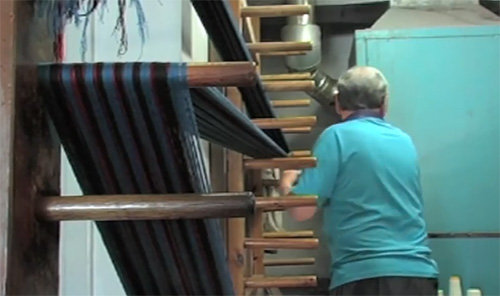
Arranging the threads on a stake warp
Next, we set up the warp; the lengthwise threads on the loom. Even our smaller, single-width looms take up to 1,630 threads to create the warp. So, now we arrange every single warp thread in the tartan sequence on this odd thing called a “stake warp”. Each thread must be a good bit longer than the fabric we're making, so well over eight yards for a kilt. Our cones deliver each thread of one repeating pattern or set. That's around 250 threads. And, of course, each thread must be tied off at the end. Only once we've strung out all 1,600 or so threads are the sets bundled into big hanks and taken off to the loom.

Warp threads are put through a wire mesh called a “reed”
Each of the lengthwise warp threads for your tartan must go through this wire mesh called a “reed”. We use a tail end from the last wave as a guide and every single thread of the new warp is individually hand-knotted to one from the last batch. This skilled operation alone takes about an hour. Now our weaver needs some help to draw the warp onto the loom. At D.C. Dalgliesh, we still use only traditional flying shuttle looms. These take much more skilled work to operate, but high-speed, computerized looms just can't create the same fine quality fabric edge that a proper kilt must have. At least our historic pedal looms now have motors fitted to save our weavers’ legs.
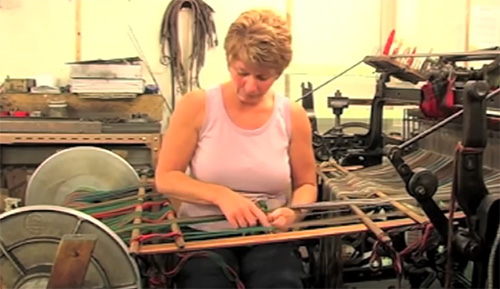
The tail ends of a previous weave are tied with the warp threads for the next weave
The crossthreads are called the “weft”. The loom lifts alternate threads of the warp and flies between them a wooden flying shuttle from this barrel at the end. Each shuttle carries a bobbin with one color of yarn, which we also wound separately earlier. Now, this chain is actually like a simple computer program, and we make a new chain for each tartan. It controls where the next or last color changes. But for any more than three colors, the weaver has to stop the machine to manually select some shuttle colors. And, of course, threads break and need to be mended and the shuttle bobbins need regular topping off. So, our weaver gets little rest as your tartan is built up inch by inch, thread by thread.
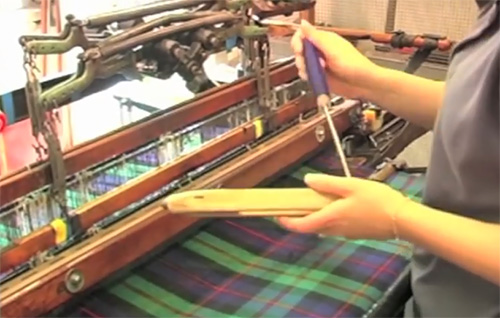
Adding a bobbin of threads to a wooden flying shuttle
But finally, almost magically, your tartan is emerging in all its beauty. These processes, by the way, are much the same for our larger tartan pieces woven on the double-width looms. Though, of course, the tools we use for these are that bit bigger with a little more automation. Astonishingly, we can even produce a single silk sash in your tartan this way. It's all the same skilled processes, just scaled down a little.
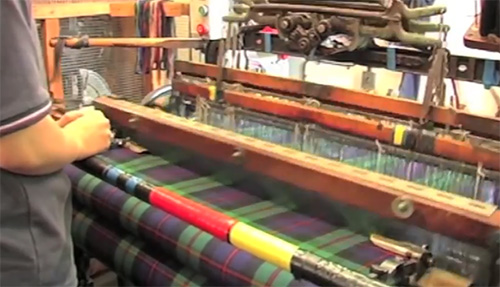
The process of weaving
But back to your single kilt length. For a traditional 8-yard kilt, our warp might be 10 yards or more long as there's always that bit at the end we can't use.
Now, look. It's ready to be cut off the loom, leaving that little tail for the next weave. Then your tartan is carefully picked over inch by inch, trimming or hand-darning any stray threads, and only now can it go to the kilt maker’s, tailor’s, or finisher’s, or else be sent to you as fabric.
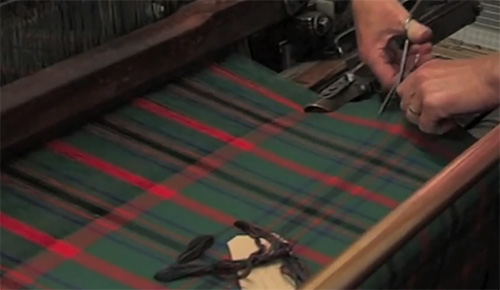
Ready fabric is cut off the loom
The glorious thing about tartan is not just it's almost infinite variation, beauty, and flexibility. It's the feeling of history, of community, and belonging. There are clan tartans and family tartans. National tartans and district tartans. Business tartans and club tartans. You certainly don't have to be Scottish. Everyone has a tartan they can wear with pride. Or why not design a tartan for yourself using colors that are meaningful to you. And they’ll weave it for you.
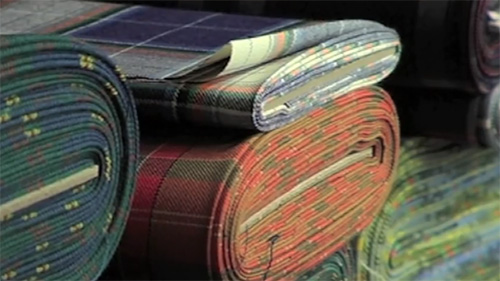
Rolls of tartan fabric of different color and design

Scottish men wearing traditional kilts
(c)


